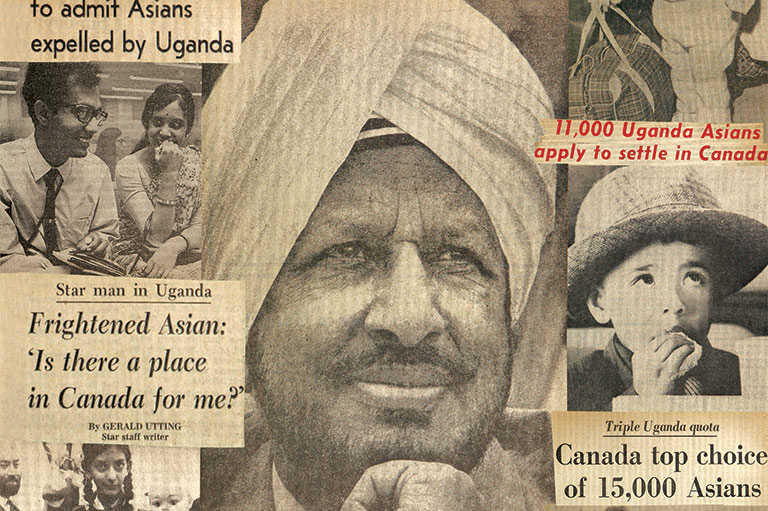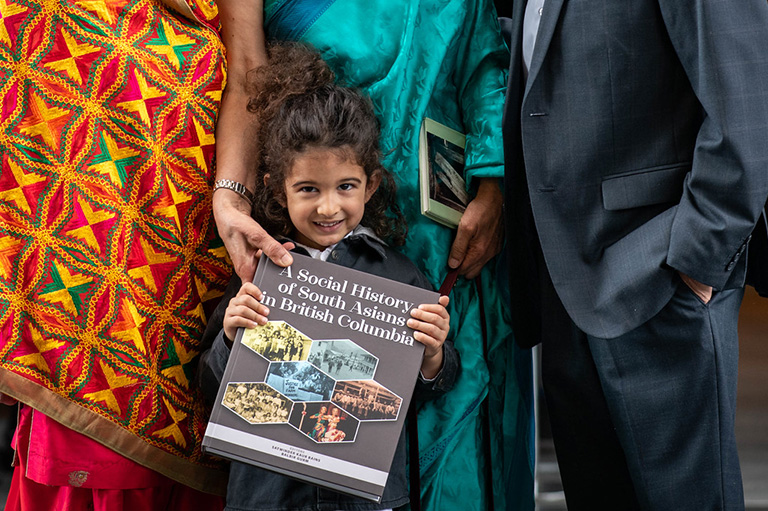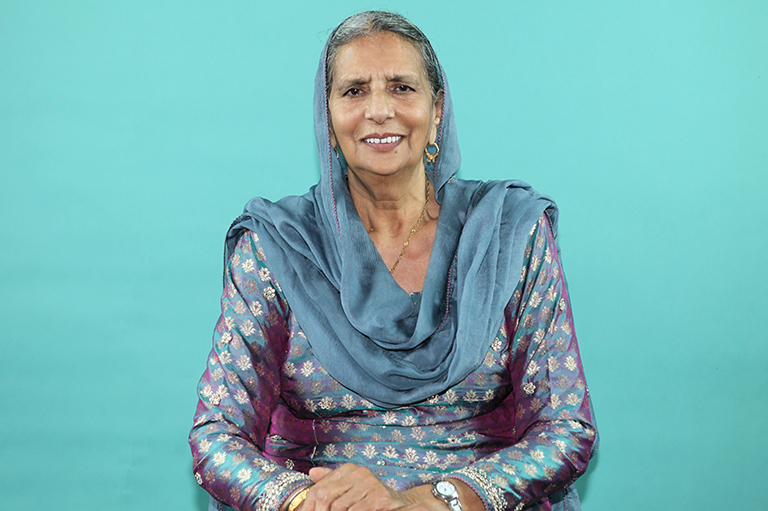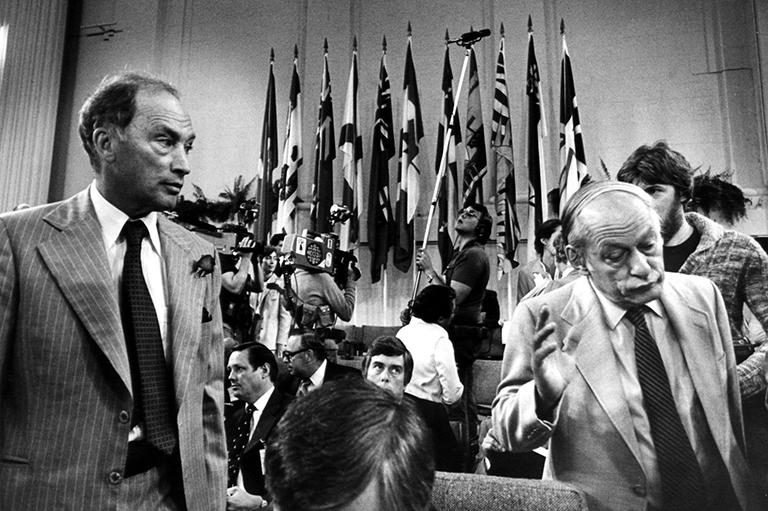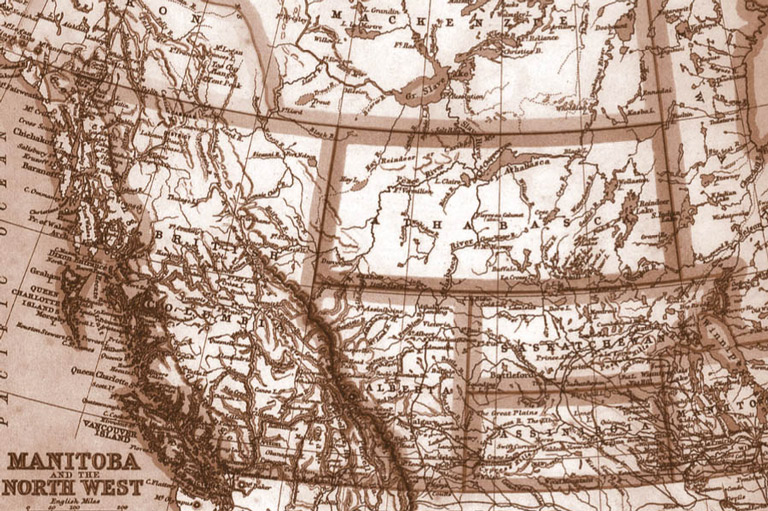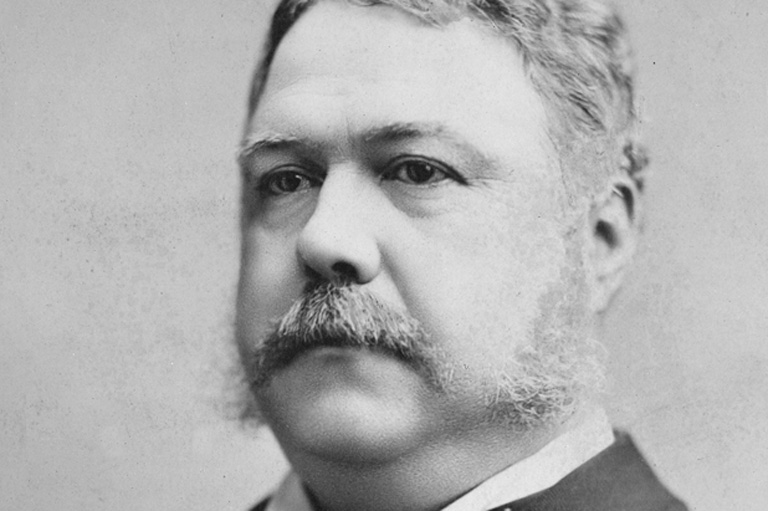Bonds of Empire
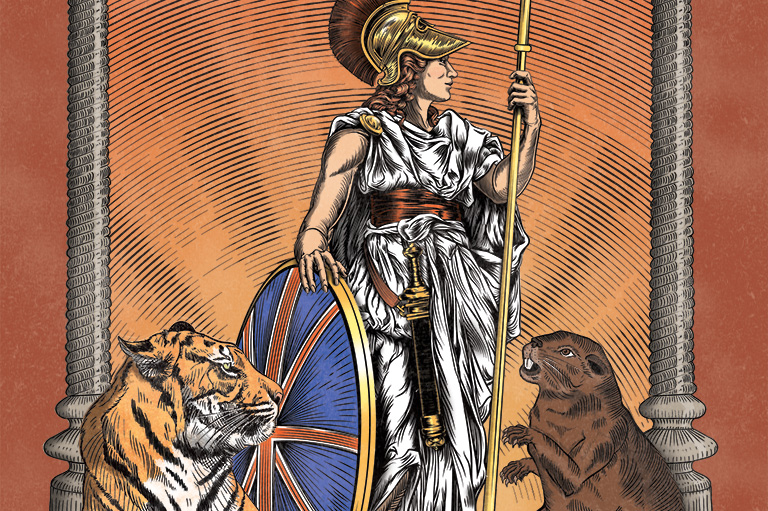
Though situated thousands of kilometres apart and separated by mighty oceans, Canada and India emerge, upon close observation, as two sides of the same coin, united by the common threads of European colonial heritage.
For hundreds of years, Canada and India were shaped by similar colonial policies and touched by many of the same explorers, navigators, Governors General, imperial administrators, officials, and military commanders. In both countries, mountains, towns, cities, streets, parks, schools, and hospitals were named after European colonial figures.
In both cases, England and France established monopolistic trading companies to further their imperial interests: in Canada, the Hudson’s Bay Company and the Compagnie des cent associés; in India, the East India Company and the Compagnie française des Indes orientales.
For both the English and the French, Canada and India were prized possessions. When England and France clashed with each other for domination in Europe, the reverberations were felt in Canada and in India as well; consequently, both colonies became inextricably intertwined with the English and French political administrations of the time. The colonists set up administrative, legislative, judicial, educational, and economic establishments and communications facilities. As a consequence, both Canada and India continue to have prime ministerial systems of government that follow the British Westminster model. Both are federations, with provinces (called “states” in India) and territories as administrative units, along with two-chambered legislatures at the centre. Further, the railways and postal networks, as well as many of the foundations of industry of Canada and India, are rooted in the activities of European colonists. Both the President’s Bodyguard in India and the Royal Canadian Mounted Police wear red uniforms, symbols of the British colonial legacy.
Both nations sacrificed lives for the cause of self-government and, ultimately, independence. Canada had the Rebellions of 1837–38; India had the Sepoy Mutiny of 1857, also called the First War of Indian Independence.
Together, Canada and India sent millions of young men to fight alongside Great Britain in the first and second world wars, sacrifices that spurred the countries’ evolution toward full, independent nationhood. However, while Britain voluntarily loosened its grip on Canada, India had to fight for its independence.
British colonial policies undoubtedly caused the dispossession and exploitation of Indians in their own land, as well as Indigenous people and French and Acadian settlers in Canada. Today, institutions and geographical features in India and Canada are under a name-changing spree, as part of an attempt to remove colonial linkages and to instead honour homegrown personalities. However, such attempts to wipe away the colonial hangover cannot change the profound political, historic, and economic influences that Canada and India experienced during European rule. In many ways, Canada and India remain tied together by the common bond of the European colonization effort.
With 7 uniquely curated newsletters to choose from, we have something for everyone.
Merchant Adventurers
Trading companies sail at the vanguard of imperialism.
As European sailing ships conquered the oceans in the sixteenth and seventeenth centuries, trading companies sought profits in far-flung lands and became instruments of monarchs’ imperial ambitions.
The East India Company (EIC), established in 1600, and the Hudson’s Bay Company (HBC), established in 1670, were both London-based joint-stock companies whose royal charters granted them monopolies on trade in distant lands reachable by means of long sea voyages. Both companies began by establishing coastal trading posts: the HBC in the North American wilderness at the mouths of key rivers that drained into Hudson and James bays, and the EIC in populous Indian coastal cities, notably Surat, Madras (now Chennai), Bombay (now Mumbai), and Calcutta (now Kolkata).
King Charles II’s royal charter claimed to make the HBC’s governor and shareholders the “true and absolute Lords and Proprietors” of all the lands draining into Hudson Bay — a vast expanse of some 3.9 million square kilometres that the king dubbed Rupert’s Land. In fact, however, the lands were occupied by many different First Nations and Inuit communities with their own territories, laws, and systems of governance. The HBC traders developed relationships with these Indigenous peoples, who harvested furs from North America’s vast forests and bartered them for European goods such as guns, knives, axes, cooking implements, and wool blankets. The HBC faced competition from French fur traders who operated out of Montreal and other posts along the St. Lawrence River and the Great Lakes.
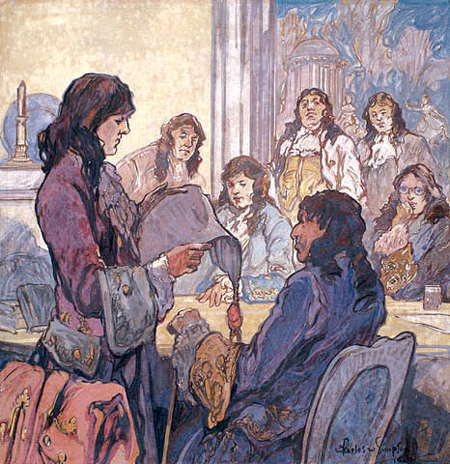
The first EIC charter, granted by Queen Elizabeth I in 1600, gave the company exclusive rights to trade in the “Indies,” an area that extended from the Cape of Good Hope, at the southern tip of Africa, to the Strait of Magellan, at the southern tip of South America. The company initially had difficulty gaining a foothold in this area due to competition by established Portuguese, Dutch, and Danish trading companies. The French came late to the contest, establishing the Compagnie française des Indes orientales in 1664.
The EIC’s fortunes improved in 1614–15 when the English King James I sent his personal envoy, Sir Thomas Roe, on a diplomatic mission to the powerful Mughal Emperor Jahangir, who ruled most of the Indian subcontinent. The emperor’s patronage allowed the company to establish fortified trading posts in India and to use them as a base for trade in cotton, silks, spices, salt, saltpetre, sugar, indigo, and, later, tea and opium.
Near the end of the eighteenth century — after Britain had taken over France’s North American colonies — the Hudson’s Bay Company expanded its reach by building a chain of inland trading posts across the Northwest. This was necessary because of increased inland competition from the rival Northwest Company and a devastating smallpox epidemic that swept up the continent from Mexico and killed up to eighty per cent of the population in some Indigenous communities, decimating the HBC’s workforce of voyageurs. Although the HBC remained a commercial enterprise that did not conquer or govern its First Nations trading partners, the company’s expansion solidified the British presence in the region.
Meanwhile, in India, the mid-1700s saw the gradual weakening of the Mughal Empire and a number of conflicts — the Deccan, Mysore, Rajputana, Central India, and Sikh wars — that pitted French, English, and Indian armies against each other. Taking advantage of the situation, the East India Company used its private mercenary army to seize territory and formed diplomatic alliances that subordinated local rulers. By the 1850s it had transformed from a purely commercial enterprise into an autocratic governing corporation that controlled most of India.
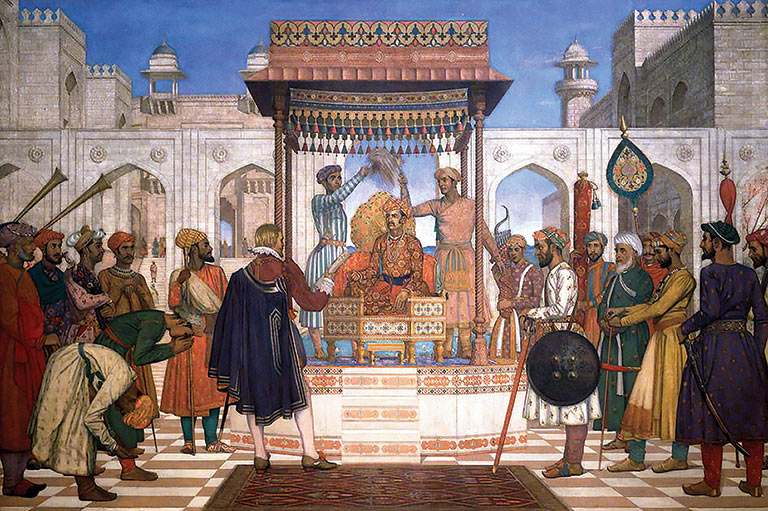
The EIC established three principal trading headquarters, called presidencies: Madras Presidency in the south in 1640, Bombay Presidency in the west in 1687, and Calcutta Presidency in the east in 1690. The EIC’s subsequent territorial conquests and annexations of royal kingdoms were incorporated into these presidencies. Each presidency was administered by a Governor General; however, Calcutta eventually emerged as the capital of EIC and British administration in India from 1772 until 1911, when the capital was shifted to Delhi.
In 1857 troops in the EIC’s army rose up in revolt against it, coinciding with rising discontentment among Indian rulers due to the confiscation of their lands and possessions by the EIC, among other factors. Known to the British as the Sepoy Mutiny and to Indian historians as the First War of Indian Independence, the uprising against British rule spread across the country and resulted in a death toll that historians estimate in the hundreds of thousands. After the uprising was crushed, the British government disbanded the EIC, took over its territory, and declared Queen Victoria the Empress of India.
Unlike the EIC, the HBC had no army. However, by the mid-1800s it was coming under pressure from the British government to take a more active role in securing the Northwest against encroachment by American traders and settlers. Ill-suited for this role, in 1870 the Hudson’s Bay Company ceded ownership of Rupert’s Land to the British Crown, without the consent of — or consultation with — the First Nations, Inuit, and Métis people who lived there. In exchange, the company received 300,000 pounds in cash, 18,210 hectares of land around its trading posts (with a further option on 2.8 million hectares of land), and the right to continue its commercial operations, albeit without a monopoly. Today, the HBC is the oldest joint-stock company in the English-speaking world.
The Seven Years War
Competition for colonies erupts into global conflict.
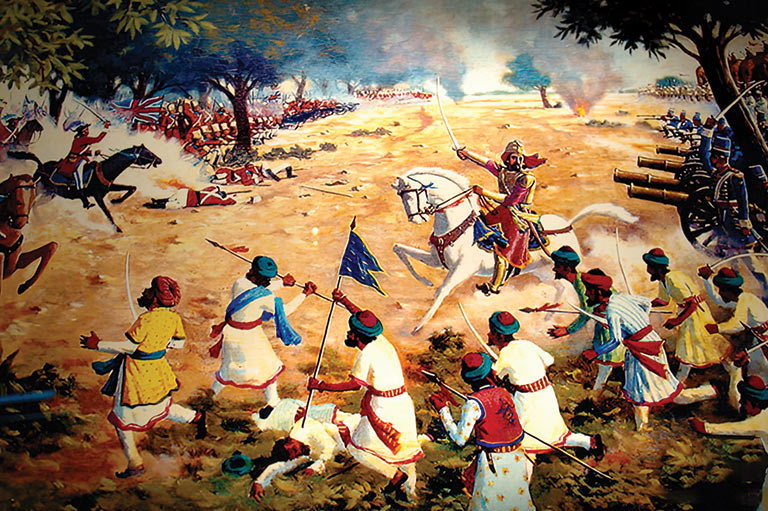
The Seven Years War from 1756 to 1763 was pivotal in the foundation of the British Empire, as tumultuous Anglo-French hostility resulted in the annexation of French colonial outposts in both North America and India.
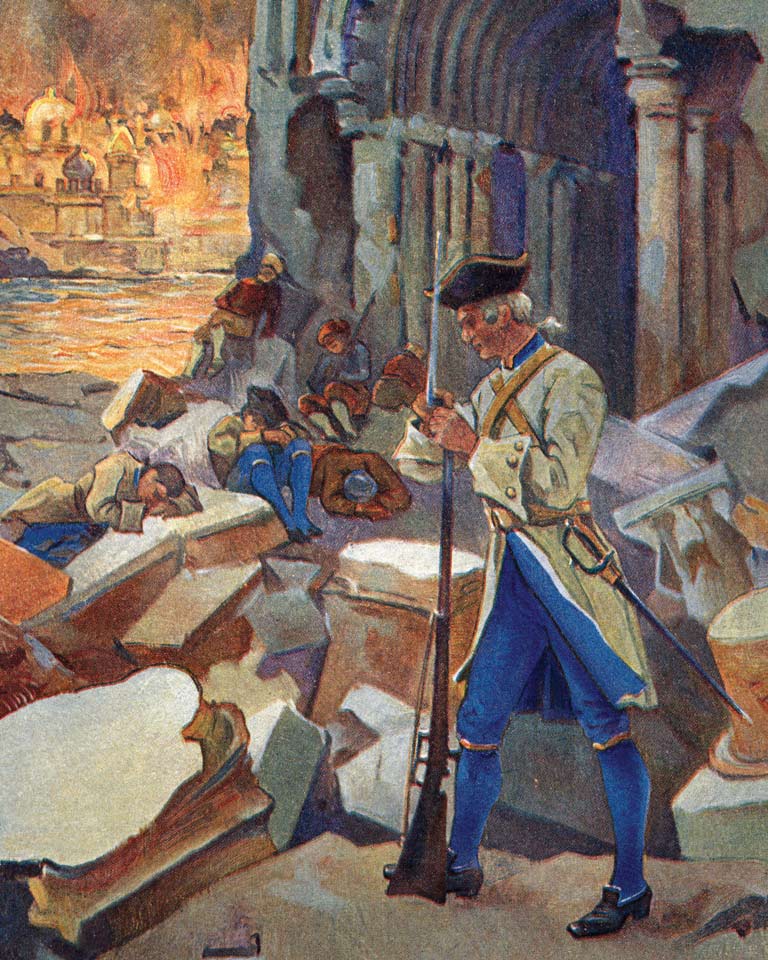
In North America, the British sought to conquer Acadia and New France, wresting control of the St. Lawrence River from the French and, with it, the main waterway into the North American interior. Taking advantage of existing enmities among Indigenous peoples, the British used their alliance with the Haudenosaunee (Iroquois) people to fight against the French and their Indigenous allies. In 1758, the British captured the fortress of Louisbourg on Cape Breton Island, France’s most important east coast stronghold. The following year, they defeated the French in the Battle of the Plains of Abraham and captured the city of Quebec. In 1760, the British captured Montreal and brought about the final fall of New France.
Meanwhile, in India, the East India Company used its private army to fight for territory against both local Indian rulers and its French rival, the Compagnie française des Indes orientales. An important figure in this conflict was Lieutenant- Colonel Robert Clive. In 1757 Clive seized Calcutta in the Battle of Plassey, using both military force and a secret agreement with a turncoat Indian general to defeat the ruler of India’s Bengal province. This marked a decisive turning point in the company’s transformation from a commercial entity into a governing colonial power. Clive became the first British governor of the Bengal Presidency, a position he held until 1760, and is credited with having laid the foundation of the EIC as a colonial power in India. The EIC also conquered the fortified French trading posts of Chandernagore in 1757 and Pondicherry (now Puducherry) in 1761.
When the Seven Years War ended with the Treaty of Paris, the British emerged as the dominant colonial power in both North America and India. In North America, France surrendered New France, Acadia, and Cape Breton Island to the English, retaining only the small fishing islands of Saint-Pierre and Miquelon. In India, the East India Company gave Pondicherry and Chandernagore back to France. (Later, these French towns would provide refuge and support to revolutionaries fighting for India’s independence.) However, the EIC’s other territorial conquests, especially in Bengal, established the base from which the company expanded its rule over the Indian subcontinent in the coming decades.
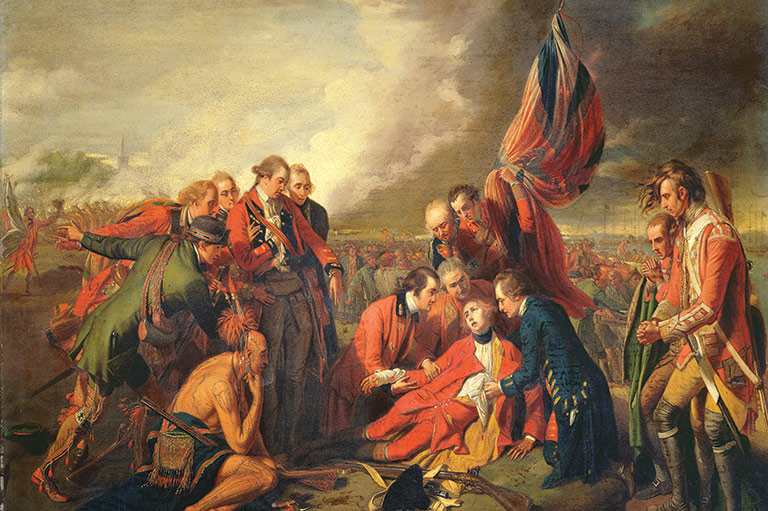
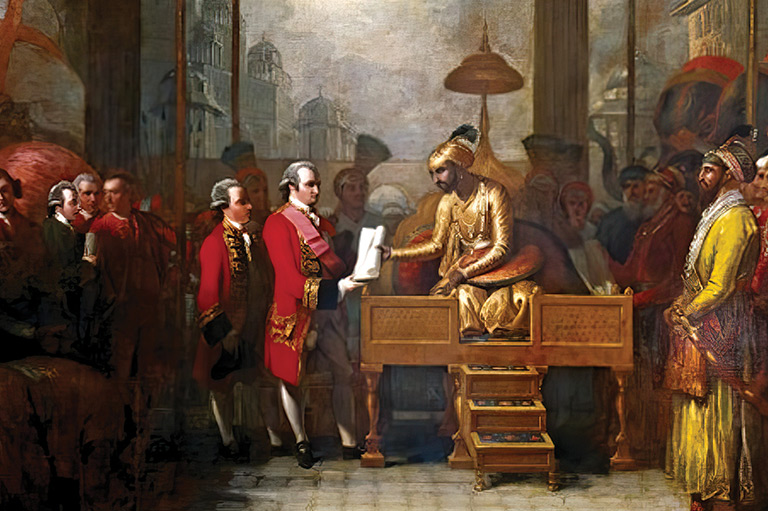
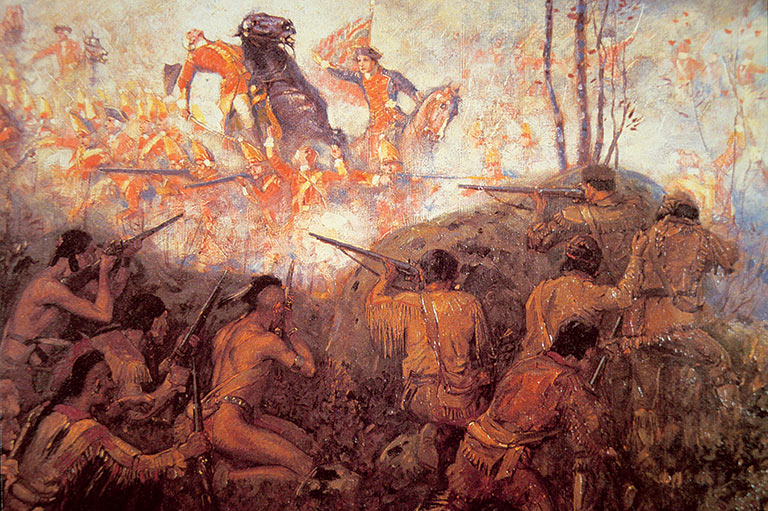
Resistance and Rebellion
Subjugated peoples rise up against the Crown.
The mid-nineteenth century marked a turning point in the colonial histories of India and Canada, due to the outbreak of popular uprisings: the rebellions in Lower Canada and Upper Canada in 1837 and 1838 and the First War of Indian Independence in 1857. But the reactions of the British Empire to these independence movements differed: While Britain loosened its control over Canada, it tightened its grip on India. ‘
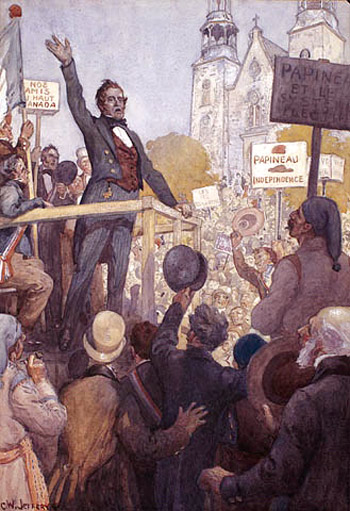
Under the Constitution Act of 1791, Upper Canada and Lower Canada each had a limited form of parliamentary democracy, with an elected legislative assembly, that was largely powerless, subordinated to an appointed legislative council and lieutenant-governor. Parliamentary reformers like Patriote leader Louis-Joseph Papineau in Lower Canada and William Lyon Mackenzie in Upper Canada clamoured for peaceful democratic reform, but the British rulers of the colonies refused to grant their demands. One of these rulers — who, along with his son, enforced British power in both Canada and India — was George Ramsay, 9th earl of Dalhousie, better known as Lord Dalhousie.
A Scottish aristocrat and an officer in the British military, Dalhousie served from 1816 to 1820 as the lieutenant-governor of Nova Scotia, where he founded Dalhousie University. He was then promoted to governor of Lower Canada and Governor General of British North America. It was in this role that Dalhousie, a staunch monarchist, came into conflict with the elected representatives in Lower Canada’s legislative assembly, particularly Papineau. Their years-long standoff contributed to frustrations among the people of Lower Canada toward their British rulers. Dalhousie left Canada in 1828 to become commander-in-chief of the army of the East India Company, but the situation between Canadian reformers and their British rulers remained unresolved.
Finally, in 1837 and 1838, militants in the Canadas took up arms against the British in a series of skirmishes that left hundreds dead and many homes burned to the ground. The British, along with Loyalist colonial troops, easily put down the insurrections.
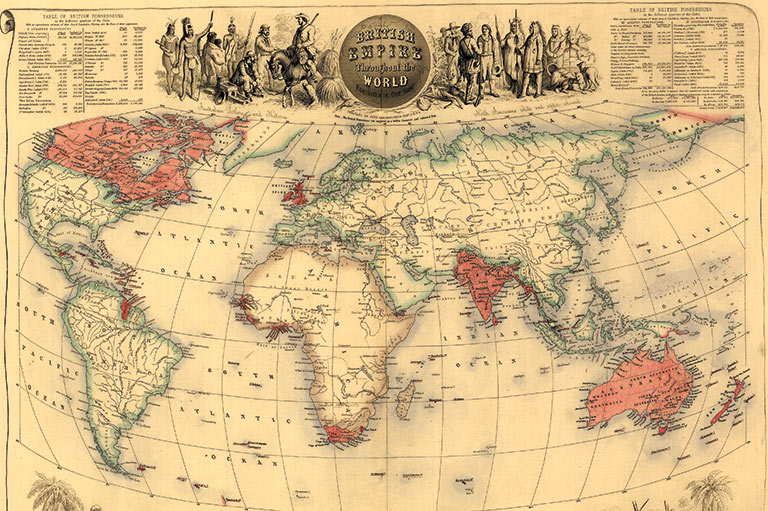
Two rebel leaders were executed in Upper Canada, and twelve in Lower Canada, while the rest either fled to the United States, served jail sentences, or were sent into exile. The rebellions prompted the British government to appoint Lord Durham to look into the causes of the trouble, and his Durham Report recommended both that the two provinces be unified (with the aim of assimilating the French) and that the resulting unified colony be granted responsible government.
As responsible government became a reality in the 1840s, the British North American colonies embarked on the path toward democracy and self-government. Britain conferred Dominion status on Canada at Confederation in 1867 and, through its deal with the Hudson’s Bay Company, transferred Rupert’s Land to Canada in 1870. It should be noted that these reforms favoured Canada’s European settlers, while Indigenous people found themselves deprived of their traditional lands, denied voting rights, and subjected to forced assimilation under the Canadian governments that gradually took over from British rule.
Meanwhile, in India, the year of 1857 was marked by the outbreak of the First War of Indian Independence, during the rule of Governor General Charles Canning. This historic uprising was the outcome of changing conditions that were born out of interwoven political, military, economic, social, and religious events following the rapid expansion and consolidation of the East India Company’s domination in the subcontinent.
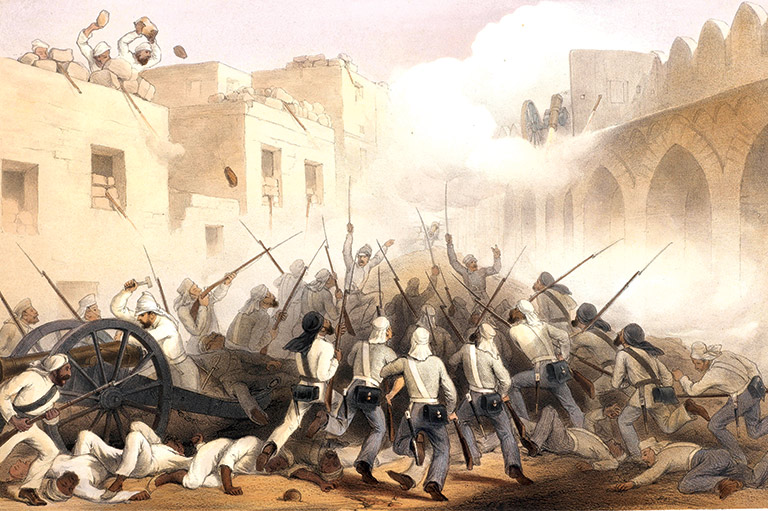
As Governor General of India from 1848 to 1856, Lord Dalhousie’s son — James Andrew Broun Ramsay, Marquess and 10th earl of Dalhousie — played a key role in enforcing British colonial rule in the years leading to the uprising. Dalhousie’s reign was notable for the tremendous expansion of EIC territory at the expense of the Indian states, due in large part to Dalhousie’s annexation policy, known as the Doctrine of Lapse. This doctrine — which allowed the EIC to confiscate princely kingdoms in the absence of a male heir to succeed to the throne — generated discontent among the Indian royal families. Simultaneously, the EIC’s repressive land reforms and tax systems milked Indians dry by squeezing out resources and fortunes from India.
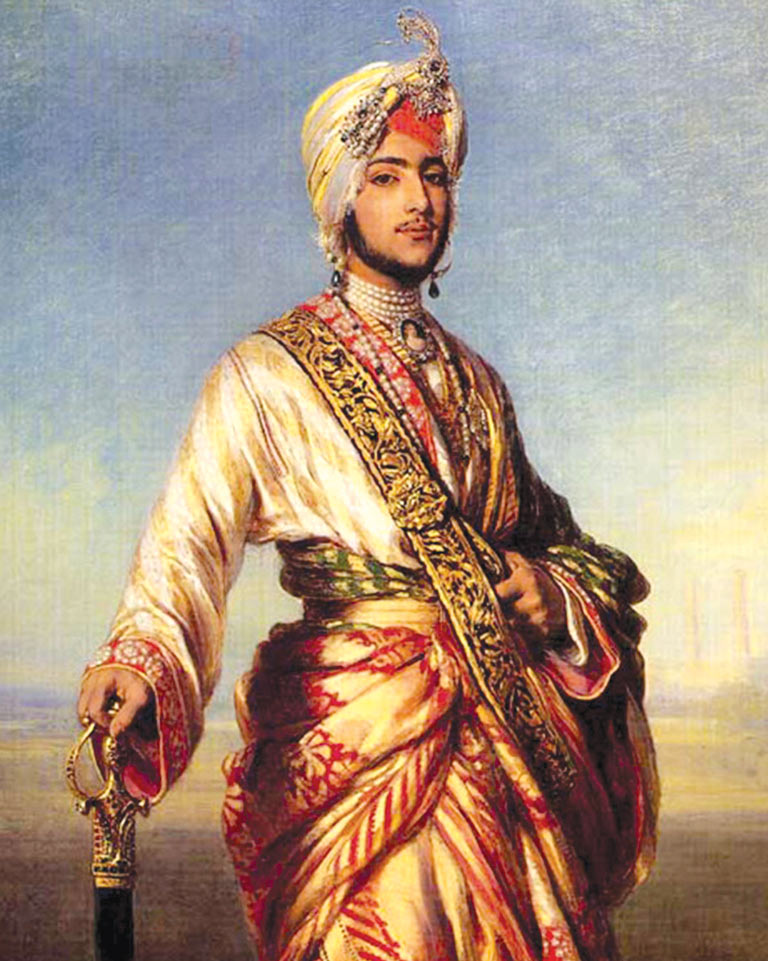
Dalhousie’s name has a special place in the British colonial expansion in India for his victory in the Second Anglo-Sikh War in 1849, by which the kingdom of Punjab came under the sovereign control of the EIC. Dalhousie forced the defeated king, ten-year-old Duleep Singh, to give up the renowned Koh-i-Noor Diamond — a huge gem that had been worn by Indian rulers for centuries — which then left India forever and became a British royal possession. It now sits in the crown of the queen consort, among the royal jewels in the Tower of London.
In addition to these irritants, the replacement of centuries- old Indian socio-cultural practices with European-style traditions brought by British and Christian missionaries disturbed the nation’s social fabric. Further, growing flames of discontent surged among the sepoys — as the EIC soldiers were called — because of the inadequate compensation they received after a series of successful armed engagements in Afghanistan, in Burma (now Myanmar), and within India, which led to considerable territorial gains for the EIC. The most immediate cause of the rebellion, however, was the introduction of Enfield rifles to sepoy troops, who believed that the rifles’ cartridges were greased with cow or pig fat, considered offensive to both Hindus and Muslims for religious reasons.
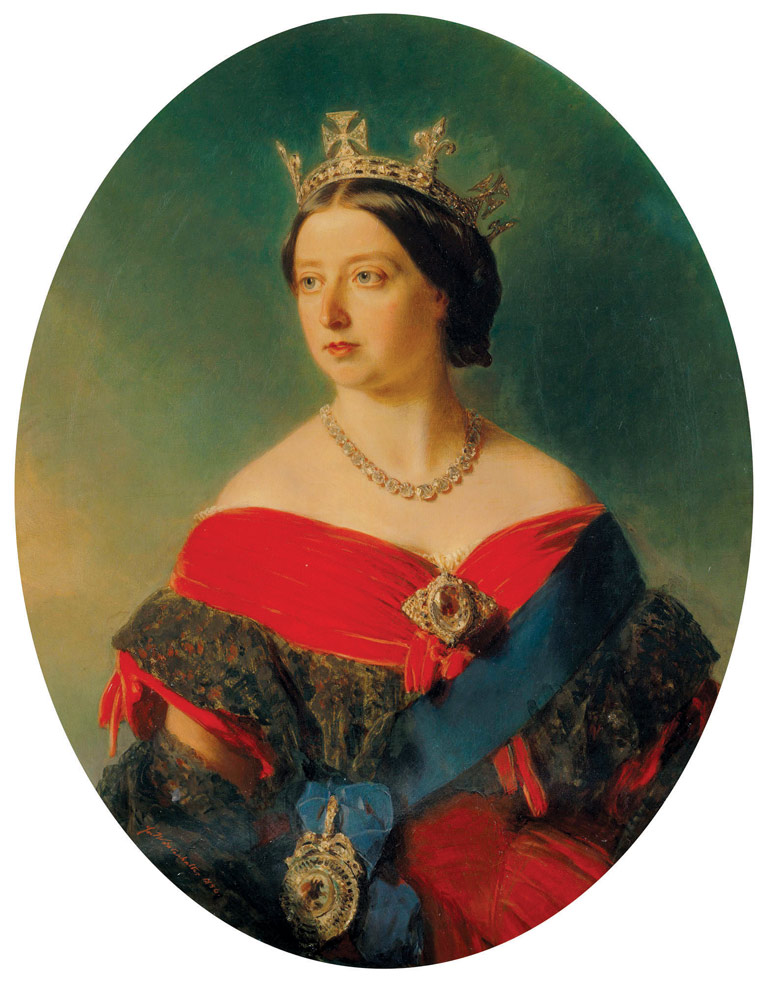
The consequence was the spreading of revolt in several parts of India, with several Europeans tortured and killed as reprisals. The revolt was violently crushed by EIC commanders. The Mughal Emperor Bahadur Shah II was deported to Rangoon (now Yangon, Myanmar), ending Mughal rule in India. His family members were shot, and the mutineers were tortured and executed. British-led troops looted and vandalized the Mughal capital of Delhi as vengeance and mercilessly slaughtered civilians. With the eventual surrender of the sepoys, India experienced a greater entrenchment of British supremacy, as governance was transferred from the EIC to the British Crown, and Queen Victoria was declared Empress of India.
Discontent with the British rulers remained an undercurrent in India after the failed war of independence. The actions and attitudes of British officials who served in both Canada and India in the late nineteenth and early twentieth centuries reflected the different situations in the two countries.
A case in point was Gilbert John Elliot-Murray- Kynynmound, 4th earl of Minto, who served as the Governor General of Canada from 1898 to 1905 and was subsequently appointed Governor General of India from 1905 to 1910.
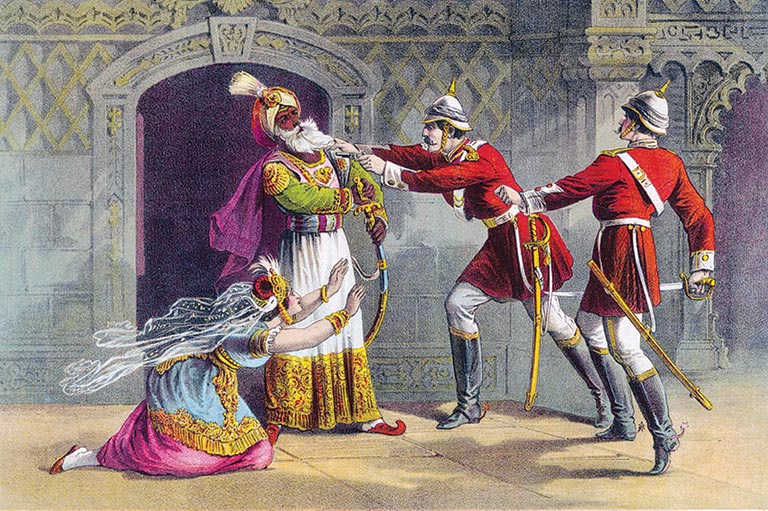
In Canada, Minto was best known as an ardent sport enthusiast who, together with his wife, founded the Minto Skating Club in Ottawa and created the Minto Cup, which is now awarded annually to the champion junior men’s box lacrosse team in Canada.
In India, by contrast, Minto enacted strict punitive measures to suppress nationalist movements and underground revolutionary activities. These activities were prompted, in part, by the decision of the previous viceroy, Lord Curzon, to partition the province of Bengal. Several notable revolutionaries who stood against the partition were arrested. While some were later acquitted, others were sentenced to imprisonment in the notorious Andaman Cellular Jail, and still others were executed.
With his Secretary of State for India, John Morley, Minto passed the Morley-Minto Reforms Act of 1909 that introduced certain political reforms and served as the background for the later formulation of the Constitution of India. The act expanded the number of seats for Indians in the central and provincial legislative councils but prevented them from debating foreign affairs, defence, and other national policy matters. The act introduced separate electoral representation for Hindus and Muslims, which acted as a precursor to communal destabilization in India.
Save as much as 40% off the cover price! 4 issues per year as low as $29.95. Available in print and digital. Tariff-exempt!
Paths to Independence
The sacrifices of the First World War demand recognition.
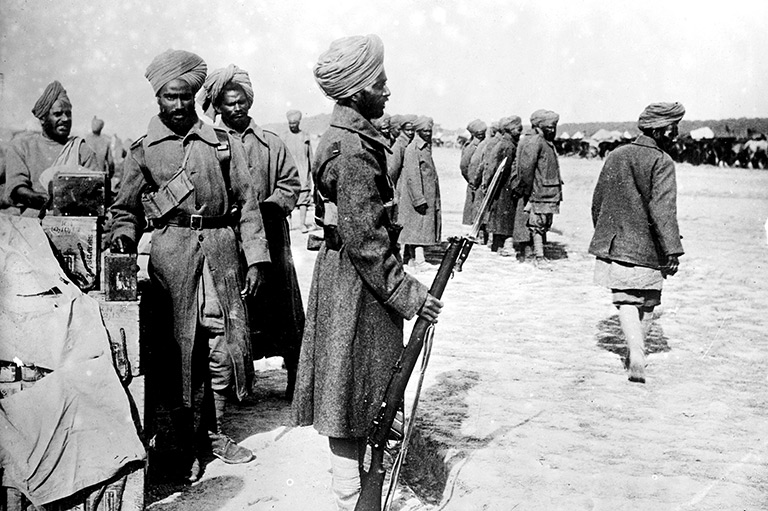
As members of the British Empire, both Canada and India fought for Britain during the First World War. Canada volunteered several hundred thousand men in uniform for land, air, and naval forces, along with weaponry, doctors, nurses, and huge monetary loans, borrowing from its citizens for the cause of the war. Apart from providing more than one million troops, India supplied animals, food, jute for sandbags, clothing, weaponry, and exorbitant monetary loans from the nation’s taxpayers, with the hope of receiving self-rule in exchange.
Some of the same British military officials were instrumental in organizing the armed forces for the First World War in both Canada and India. For example, Sir Percy Lake was chief of the Canadian General Staff in 1905 before engaging as India’s chief of the General Staff in 1912.
After the war, Canada rapidly evolved as an independent nation, signing the Treaty of Versailles in 1919 and joining the League of Nations as a self-governing country within the British Empire in 1920. In 1931 the Statute of Westminster gave Canada control over its foreign policy, which had previously been reserved for the British Parliament.
Despite India’s sacrifices, its contributions remained unacknowledged, and Britain denied Indians the same rewards as it had granted to Canadians.
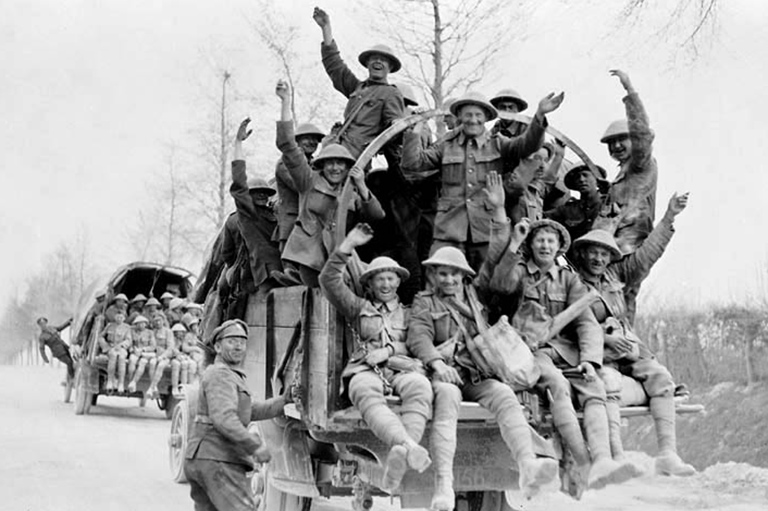
Against India’s demand for self-government, the Montagu-Chelmsford Reforms of 1919 (named after Edwin Montagu, the Secretary of State for India from 1917 to 1922, and Lord Chelmsford, the viceroy of India from 1916 to 1921) introduced a two-chambered legislature and separated administrative responsibilities between the central and provincial governments in the form of a diarchy. However, the reform brought only a limited transfer of power to the Indian population as a “reward” for wartime service. In response to this betrayal, the Satyagraha movement surged across the nation under the stewardship of Mahatma Gandhi, prompting the passage of the Rowlatt Acts of 1919 by the British. The acts curtailed civil liberties, legitimized arbitrary arrest and imprisonment without trial, and imposed postwar emergency rule. Under them, the government orchestrated the atrocious Jallianwala Bagh massacre that killed hundreds of innocent, unarmed civilian protestors in Jallianwala, Punjab; forcibly suppressed several other public protests; and executed freedom fighters throughout the country.
Jawaharlal Nehru, who would become India’s first prime minister in 1947, demanded dominion status — similar to Canada and Australia — in his famous Nehru Report of 1928. The British government rejected his request and suppressed a series of national movements. The actions of British colonial official Freeman Freeman-Thomas, 1st Marquess of Willingdon, once again demonstrated Britain’s differing attitudes toward Canada and India during this period.
As Governor General of Canada from 1926 to 1931, Willingdon was a benign figure who initiated the Willingdon Arts Competitions for excellence in music, literature, painting, and sculpture. However, he played a very different role as viceroy and Governor General of India from 1931 to 1936.
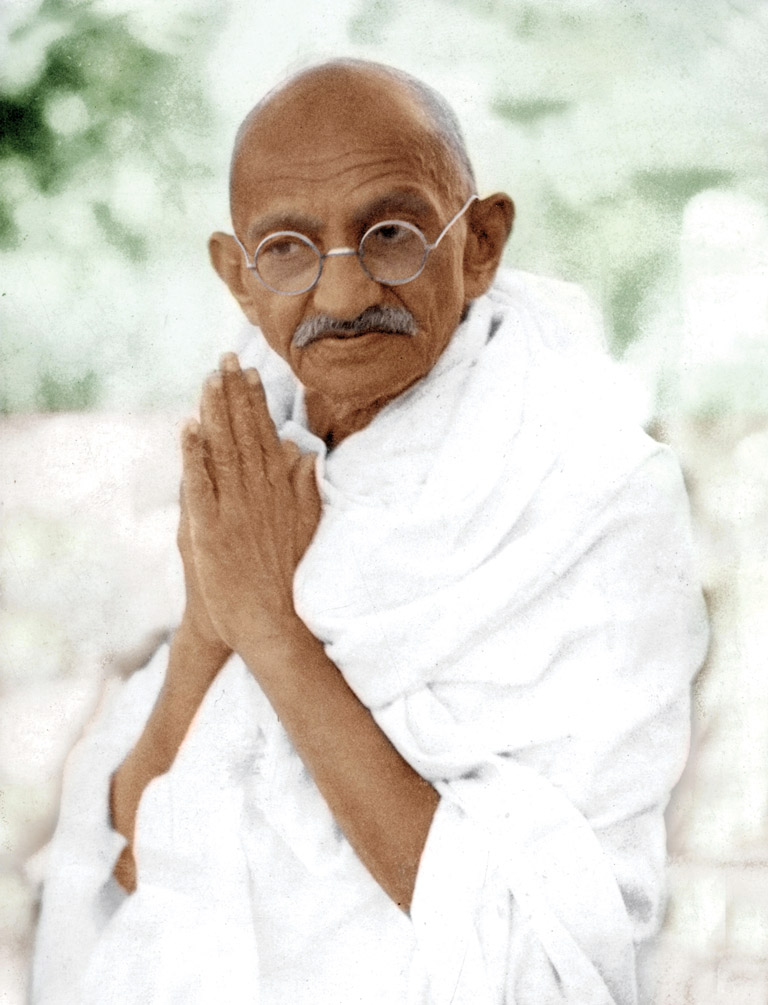
His arrival in India coincided with the nationwide civil-disobedience movement against British rule under the influence of Gandhi. The movement called for protests, strikes, the refusal to pay taxes, a boycott of British goods, and non-co-operation with the British until complete independence (Purna Swaraj) was achieved. Gandhi started his famous march to Dandi in western India in 1930 to prepare salt from the sea, in defiance of Britain’s repressive Salt Act, which prevented Indians from making salt indigenously and imposed exorbitant taxes on salt imported from Britain.
Seeing Gandhi as a grave threat to British governance, Lord Willingdon refused to grant him an audience and instead ordered his imprisonment, along with his followers, in Yeravda Jail in 1932. More than 120,000 Indian protestors were put behind bars, tortured, fined, or had their properties confiscated as punitive measures. These actions instigated further nationalist activities with the aim of achieving eventual freedom from the British Empire.
In 1935 the British Parliament passed the Government of India Act that introduced limited self-governing status. Separating Burma (now Myanmar) from India, the act introduced constitutional reforms, such as federalism and provincial autonomy, but kept a large amount of power in the hands of British-appointed officials who served the interests of the British Parliament instead of those of India. Seats in the provincial legislatures were based on communal award — meaning separate electoral representation along religious and gender lines — against the wishes of the Indian populace. These injustices sparked freedom movements, armed uprisings, and attacks by a nationalist force called Azad Hind Fauj, organized and led by independence fighter Netaji Subhas Chandra Bose, that finally forced London to relinquish control over India and paved the way both for India’s independence and the “great partition” of India and Pakistan in 1947.
India and Canada Today
Connecting beyond the colonial past.
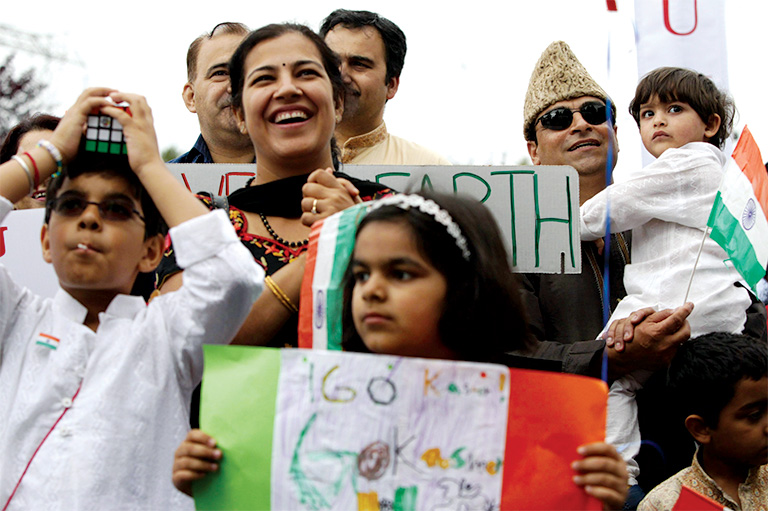
Today, as Commonwealth partners, Canada and India cherish their natural friendship by virtue of their shared liberal-democratic traditions; multicultural, multi-ethnic, multilingual, and multi-religious identities; and long-nurtured pluralist outlook. Both of the parliamentary democracies have women of Indigenous origin in high office: Mary Simon, an Inuk, is Canada’s Governor General, while Droupadi Murmu, a Santal, is India’s president.
The countries’ prime ministers have maintained close co-operation with each other since India’s independence in 1947. Jawaharlal Nehru, India’s first prime minister, and Louis St. Laurent, the twelfth prime minister of Canada, addressed each other’s parliaments in Ottawa in 1949 and in New Delhi in 1954, respectively, while Nehru’s daughter and India’s third prime minister, Indira Gandhi, addressed the Canadian Parliament in 1973. This long-standing partnership continues today between prime ministers Justin Trudeau and Narendra Modi.
Since the end of the Second World War, the bilateral relationship between the two democracies has witnessed a substantial upward trajectory through multi-sectoral engagements. Canada was one of the foremost nations to support India’s nuclear power program, by supplying a CIRUS (Canada India Reactor Utility Services) research reactor in 1956 and a CANDU (Canada Deuterium Uranium) reactor in 1963. India is a high-priority trade and strategic partner for Canada, especially as a member of the G-20 and of the Indo-Pacific region. Bilateral trade reached a value of $8.38 billion in 2022, and ministers from both countries are negotiating towards a Comprehensive Economic Partnership Agreement.
Both democracies have extensive bilateral agreements on terrorism, security, extradition, science and technology, patent rights, health, environment, agriculture, civil aviation, and tourism, along with investments in banking and insurance, mining, research and education, and goods and services. They supported each other during the COVID-19 pandemic by supplying vaccines and medical equipment.
Canada’s multiculturalism has always attracted Indian immigrants, and the Indian diaspora currently makes up one of the largest cultural communities in Canada, with more than 1.6 million people of Indian descent calling Canada home. The year 2011 was bilaterally declared the Year of India in Canada, with the aim of boosting sociocultural ties.
Eminent Canadian personalities such as Defence Minister Anita Anand, federal NDP leader Jagmeet Singh, McGill University principal and vice-chancellor Deep Saini, Saint Mary’s University associate vice-president Rohini Banerjee, Toronto Raptors superfan Nav Bhatia, and filmmaker Deepa Mehta are just some of the many people with Indian heritage augmenting Canada’s cultural diversity and strengthening Indo-Canadian friendship. Indian yoga, music, festivals, and cuisine are fast gaining popularity in Canada, while Cricket Canada provides opportunities for Indo-Canadian cricketers to compete in international matches. Consequently, in addition to their colonial connections, Canada and India today enjoy a prosperous relationship built upon trust, friendship, and mutual respect.

The Cornwallises: Imposing British Rule
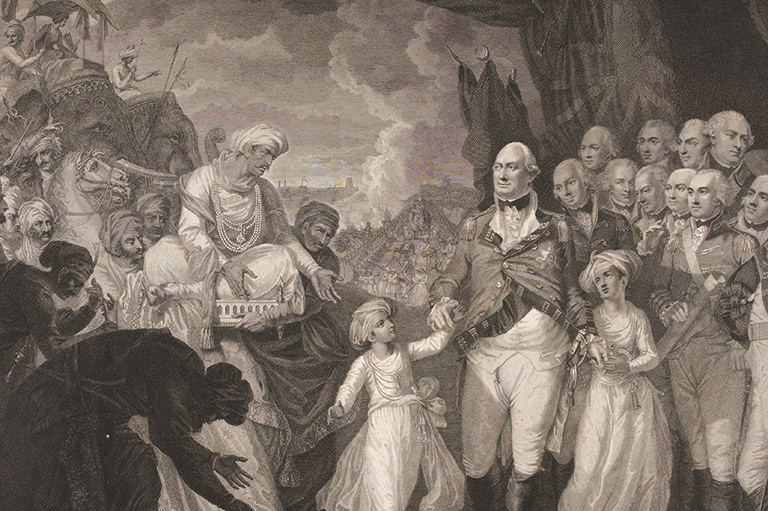
Born in England in 1713, Edward Cornwallis was a prominent British politician and military general. After fighting as an officer in the war that crushed the Scottish independence movement in 1745–46, he was appointed governor of Nova Scotia, a post he held from 1749 to 1752. He founded the city of Halifax on traditional Mi’kmaw territory and soon came into armed conflict with the Mi’kmaq, who were allied with the French. He was credited with introducing courts of law for solving both civil and criminal cases in accordance with English laws in Nova Scotia. However, Cornwallis became infamous for offering a bounty on the heads of Mi’kmaw men, women, and children.
Another member of the family, Charles, 1st Marquess and 2nd Earl Cornwallis, became the Governor General of India from 1786 to 1793 and again in 1805. (He died the same year and was cremated in Ghazipur, India.) In 1793 he introduced land-taxing policies called Permanent Settlement, which squeezed money out of commoners in order to generate income for the East India Company (EIC) and to consolidate British power. Under these policies, Indian landowners paid an annual fixed tax to the EIC. Since failure to pay resulted in the forfeiture of their lands, landowners forcibly extracted revenue from the peasants and downtrodden poor in order to pay the tax to the company.
Under Cornwallis’s governorship, the EIC annexed half of the kingdom of Mysore after defeating its powerful ruler, Tipu Sultan, at the end of the Third Anglo-Mysore War in 1792.
One of the principal thoroughfares between north and south Calcutta was once named Cornwallis Street; however, it has been renamed Bidhan Sarani after West Bengal’s first chief minister, Dr. Bidhan Chandra Roy. Similarly, Halifax’s Cornwallis Street has been renamed Nora Bernard Street after a Mi’kmaw activist who successfully demanded compensation for residential school survivors.
The Amhersts: Conquerors and Commanders
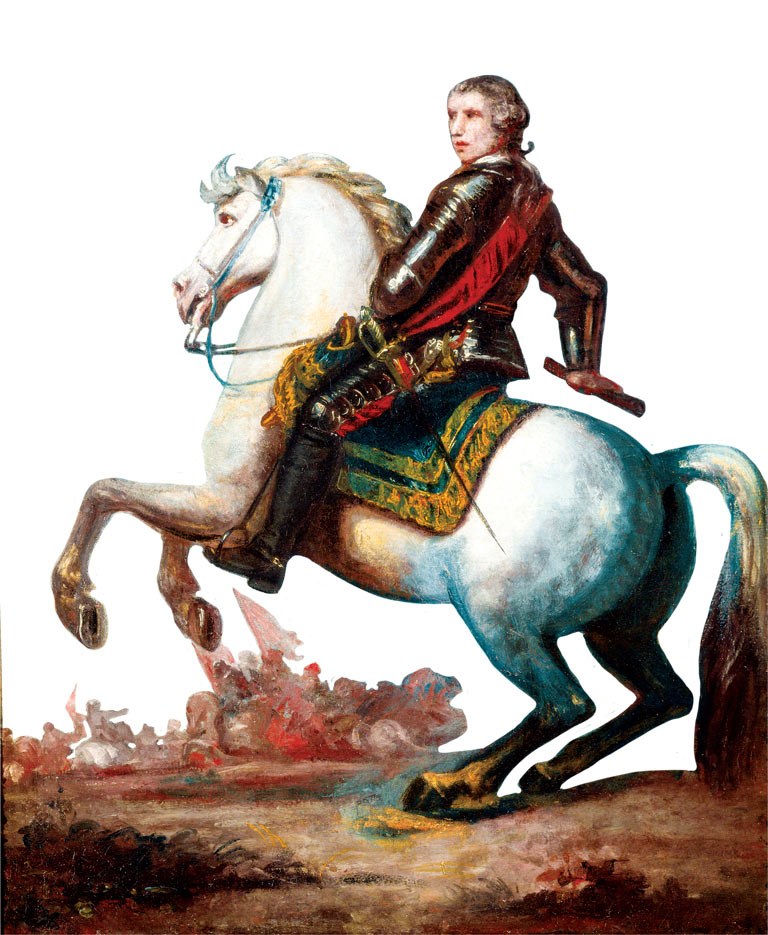
Lord Jeffery Amherst, 1st Baron Amherst, was the commander-in-chief of British forces in North America during the Seven Years War. He led a successful siege of the French fortress of Louisbourg in 1758. On September 8, 1760, he accepted the surrender of Montreal, the final coup in the fall of New France. The city of Amherst in Nova Scotia was named in his honour.
Amherst acted humanely toward the conquered French Canadians, but his legacy is tarnished by letters he wrote to officers under his command during an uprising of Ottawa warriors under Chief Pontiac in 1763. The letters contemplated the use of hunting dogs and smallpox-infected blankets as instruments of warfare against First Nations and called for the “Total Extirpation” of the Ottawa people.
One of his brothers, Admiral John Amherst of the Royal Navy, fought in the Seven Years War in both Canada and India. He also played a role in capturing Fort St. David, near Pondicherry, India, from the French during the First Carnatic War, which pitted the East India Company against the Compagnie française des Indes orientales in the 1740s.
Lord Jeffery Amherst’s great-nephew, William Pitt Amherst, was appointed Governor General of India from 1823 to 1828. Under his reign the East India Company fought the First Anglo-Burmese War (1824–26), expelling the Burmese from Assam in northeast India and annexing the territory. During his term, the renowned Sanskrit College was established in Calcutta in 1824. It still functions as one of the prime educational institutions for studying ancient Indian languages and world history.
Lord Metcalfe: Liberator of the Indian Press
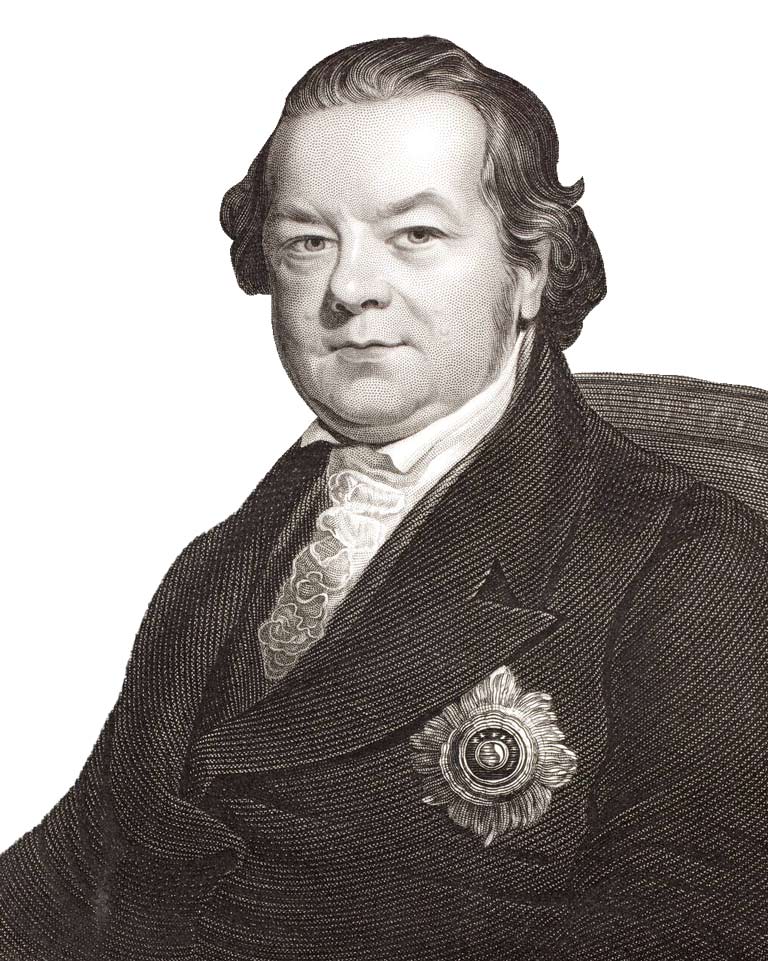
Born in Calcutta in 1785, Sir Charles Theophilus, 1st Baron Metcalfe, joined the EIC in 1801 as an administrator. He later became acting Governor General of India from 1835 to 1836, and thereafter Governor General of Canada from 1843 to 1845.
While in office in India, he earned the title “liberator of the Indian Press” in 1835 by passing the Press Act under pressure from Indian social reformer Raja Ram Mohan Roy. The Press Act repealed a law passed by a previous Governor General that had imposed restrictions on newspapers published in Indian languages. However, the Press Act was in effect only until 1857, when it was repealed at the outbreak of the First War of Indian Independence. The magnificent Metcalfe Hall was built in Calcutta in his honour between 1840 and 1844 and served as a grand archive of rare manuscripts, books, and journals. It bore the name Calcutta Public Library until its resources were shifted to the National Library after Indian independence in 1947.
After assuming his responsibilities as Governor General of Canada in 1843, Metcalfe rejected the British plan for the forced anglicization of the French-Canadian population and recommended equal status for both English and French languages in the legislature. He favoured making Montreal the capital instead of Kingston and issued a large number of pardons to people who had fought against British rule in the Rebellion of Lower Canada. Rue Metcalfe in Montreal, Ontario’s Metcalfe Township, and Metcalfe Street in Ottawa commemorate this statesman.
Lord Dufferin: Enlightened Governance
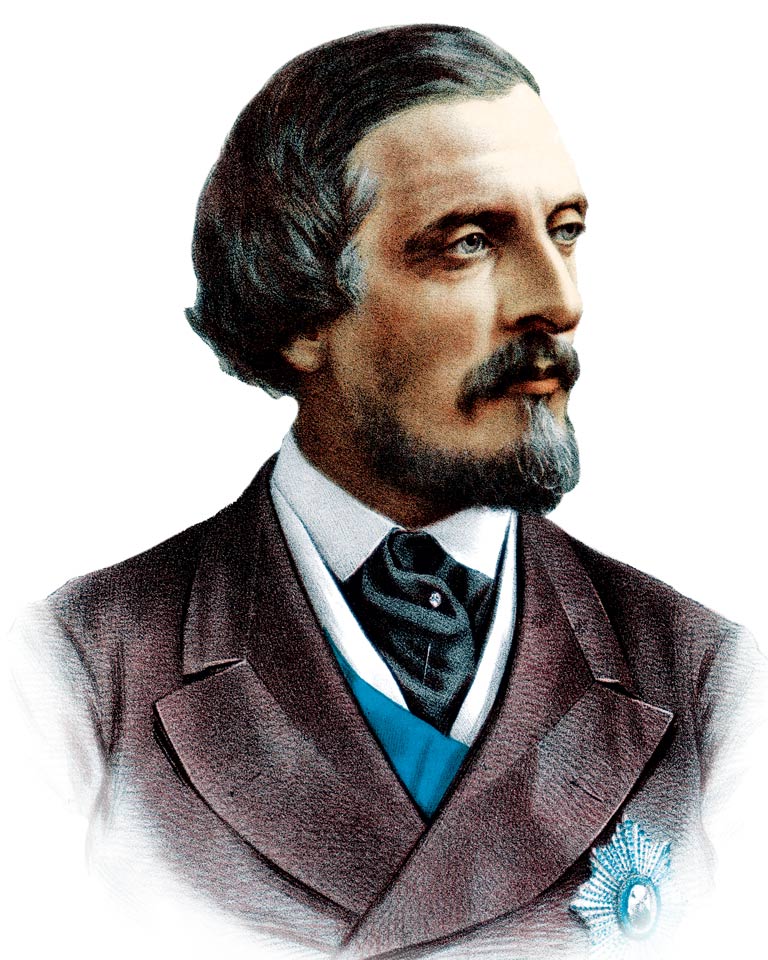
Frederick Temple Hamilton-Temple-Blackwood, 1st Marquess of Dufferin and Ava, served as the Governor General of Canada from 1872 to 1878, a term marked by the incorporation of Prince Edward Island into Canadian Confederation in 1873 and the establishment of the Supreme Court of Canada in 1875. Concerned that British heavy-handedness would cause Canadians to follow the American route toward independence, Dufferin lobbied the British colonial office to provide Canadians with more control over their own affairs. Fort Dufferin, now a National Historic Site in Manitoba, was constructed during his tenure and served to secure the border with the United States. Dufferin served as viceroy of India from 1884 to 1888. Seeing the need for a responsible organization through which he could remain informed about Indian public opinion, he facilitated the foundation of the Indian National Congress (INC) in 1885. The INC initially created a bridge between the British government and Indian leaders, and it later served as the backbone of India’s freedom movement. Dufferin’s wife, Hariot Georgina Hamilton-Temple-Blackwood, Marchioness of Dufferin and Ava, played a pioneering role in establishing medical colleges and hospitals, named Lady Dufferin hospitals, across India.
The Lyttons: Upholding the Empire
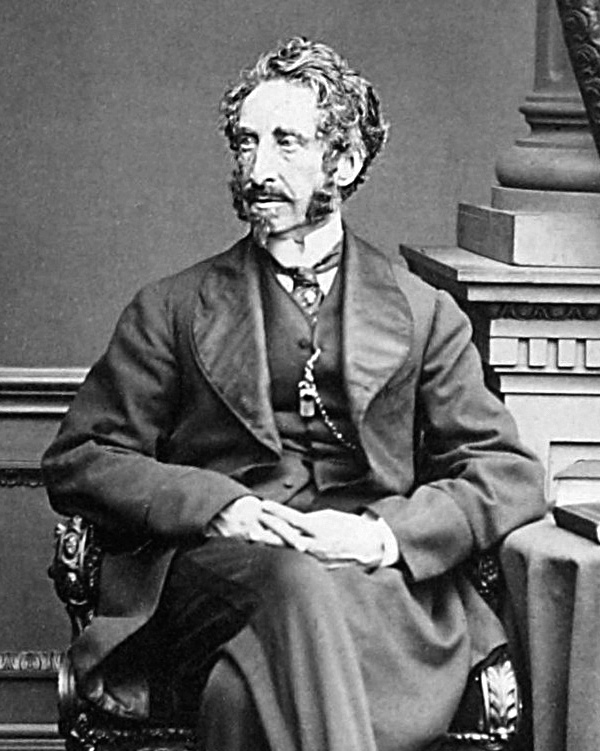
The community of Lytton in British Columbia is named after the English novelist and British statesman Edward George Earle Lytton Bulwer-Lytton, 1st Baron Lytton. Lytton served as the British Secretary of State for the colonies from 1858 to 1859, during which time he introduced the bill in the British legislature that created the colony of British Columbia, securing the British presence at the Pacific Ocean. His insistence that the colony should be governed and administered by the British Crown, rather than by the Hudson’s Bay Company, paralleled the British government’s decision in 1858 to take over the governance of India from the East India Company.
His son Edward Robert Bulwer-Lytton, 1st earl of Lytton, was the viceroy of India from 1876 to 1880. His viceregal tenure was marked by a devastating famine in Madras, caused partly by crop failure but also by the excessive exporting of crops to England under Lytton’s stewardship. In an effort to suppress Indian nationalist sentiment, which was gaining momentum due to British oppression, Lytton in 1878 passed the Vernacular Press Act, which censored newspapers published in Indian vernacular languages. He presided over the first Delhi Durbar of 1877, a magnificent event attended by royalty, British officials, and Indian maharajas and nawabs, to celebrate Queen Victoria’s assumption of the title of Empress of India.
The first earl’s son, Victor Alexander George Robert Bulwer-Lytton, 2nd earl of Lytton, was born in India and served as the governor of Bengal from 1922 to 1927 and acting viceroy of India in 1925. He governed during a time when the nation was reeling under national movements and public protests, led by Mahatma Gandhi, and revolutionary activities directed toward overthrowing the British government. Lytton suppressed these activities and detained the revolutionaries so as to quell the anti-British uprising.
Thanks to Section 25 of the Canadian Charter of Rights and Freedoms, Canada became the first country in the world to recognize multiculturalism in its Constitution. With your help, we can continue to share voices from the past that were previously silenced or ignored.
We highlight our nation’s diverse past by telling stories that illuminate the people, places, and events that unite us as Canadians, and by making those stories accessible to everyone through our free online content.
Canada’s History is a registered charity that depends on contributions from readers like you to share inspiring and informative stories with students and citizens of all ages — award-winning stories written by Canada’s top historians, authors, journalists, and history enthusiasts.
Any amount helps, or better yet, start a monthly donation today. Your support makes all the difference. Thank you!
Themes associated with this article
Advertisement

